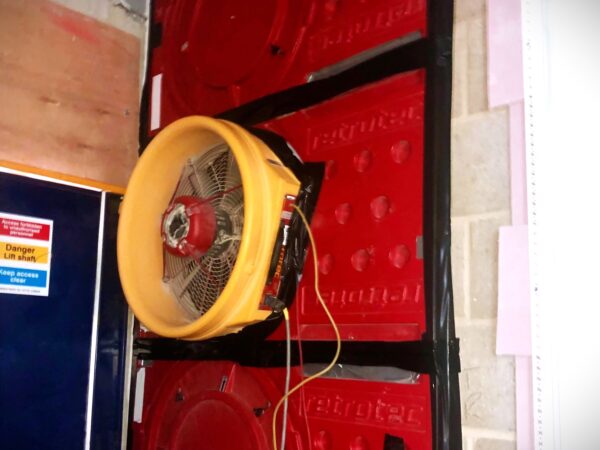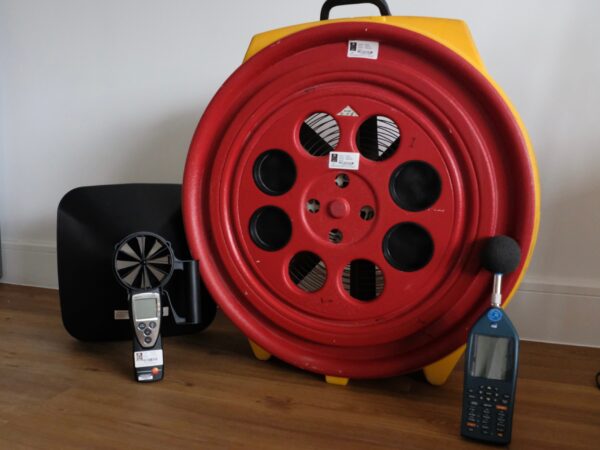The frequency of air testing smoke shafts can depend on many scenarios, so it can be a complicated answer. The frequency of smoke shaft air testing depends on various factors, including building regulations, insurance requirements and the specific characteristics of the building. Here are some general guidelines:
- New Buildings or Major Renovations: For newly constructed buildings or significant renovations, newly installed smoke shafts should undergo initial testing to verify their airtightness. This ensures compliance with safety standards and confirms that the smoke shafts will function effectively during emergencies.
- Periodic Testing and Regular Maintenance: After the initial test, smoke shafts should be retested periodically to ensure ongoing airtightness. The frequency of retesting can vary but is typically recommended every 12 months. Regular maintenance and inspections help identify any deterioration or damage that may compromise the shaft’s performance.

Works to smoke shafts that require additional air testing
Works to the Smoke Shaft: Certain events may require additional testing:
- Alterations to the smoke shaft: If modifications are made to the fabric of the smoke shaft or adjacent areas, retesting is necessary.
- Fire Incidents: After a fire incident, smoke shafts should be inspected and tested to confirm their ongoing integrity.
- Building Occupancy Changes: If the building’s use changes significantly, retesting may be required, i.e. an office building to residential.
- Consult Local Authorities and Experts: Always consult with local fire safety authorities, building control officers, or fire engineers. They can provide specific guidance based on regional regulations and best practices.
Remember that maintaining properly functioning smoke shafts is essential for occupant safety during fires. Regular air testing ensures their reliability and effectiveness in smoke extraction. For more information on the regulations that govern AOV smoke shafts please check out BS EN 12101-2:2006, which covers the design of smoke ventilation systems, and TM23:2022 which covers the air testing of buildings

We can help with your smoke shaft air testing requirements
There are many reasons why you should choose us to undertake the air testing to your smoke shafts, here are just a few of them.
- We are a UKAS accredited air testing company
- We are a ATTMA Level 2 accredited
- Our company is accredited to undertake envelope calculations.
- We have undertaken smoke shaft tests to hundreds of smoke shafts
You need to ensure that you are compliant you need to pass the smoke shaft test, as its imperative in achieving building control signoff. Sometimes, with these building regulations, you can feel like you have a lot of red tape, but you don’t have to worry, we are here to help you every step of the way!
We can provide next-day smoke shaft certificates and offer our best price guarantee. We can help you every step of the way from the initial site survey visit through to the final testing. Generally, our clients find that involving us as early as possible saves them the most money. Our expert advice helps them avoid expensive remedial work, ensuring all their smoke shafts pass first time.
Please get in touch to discuss your next smoke shaft air pressure testing requirements.
For more information please contact Darren direct on 07775623464 or email us at info@airpressuretesting.net
